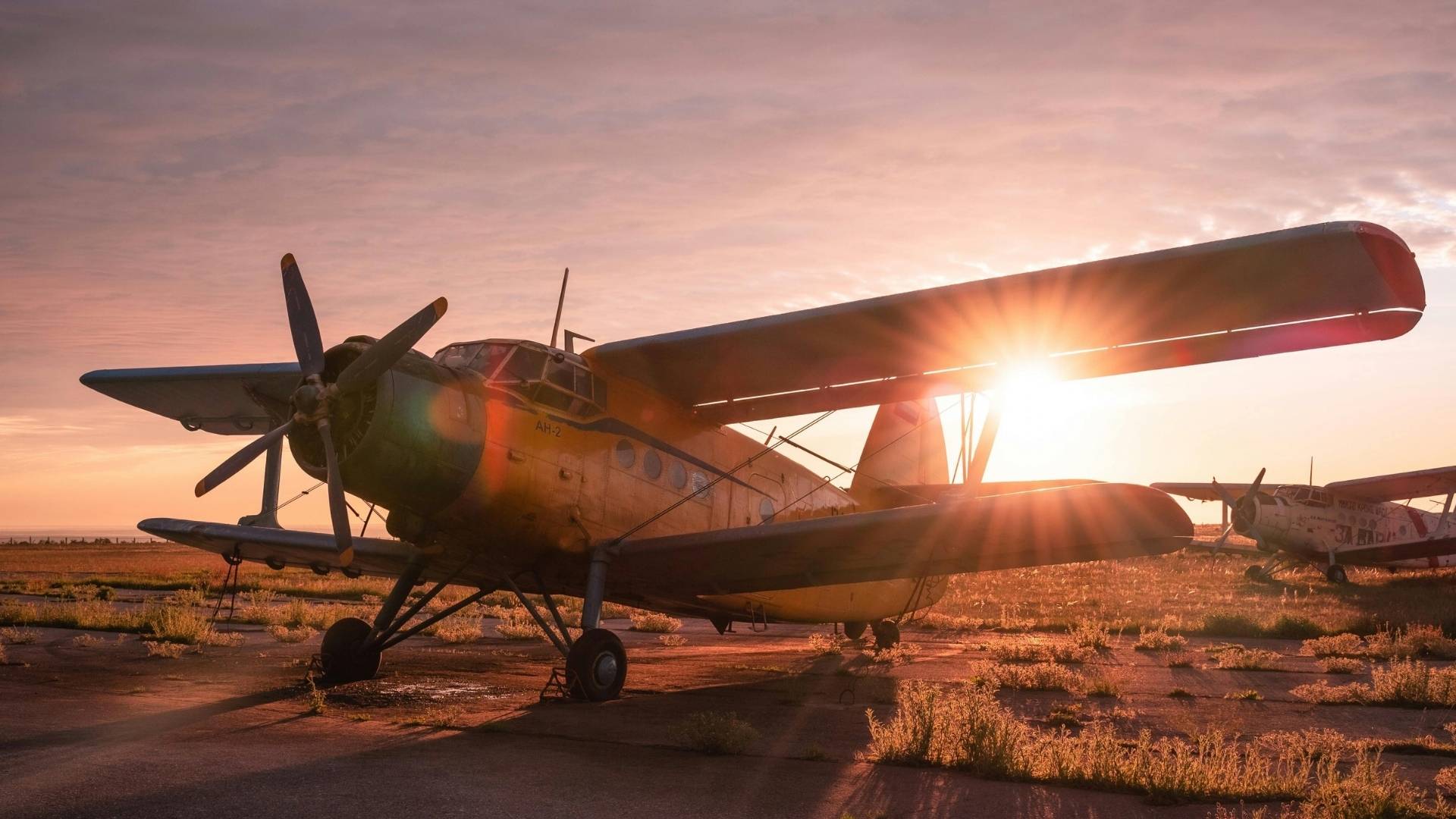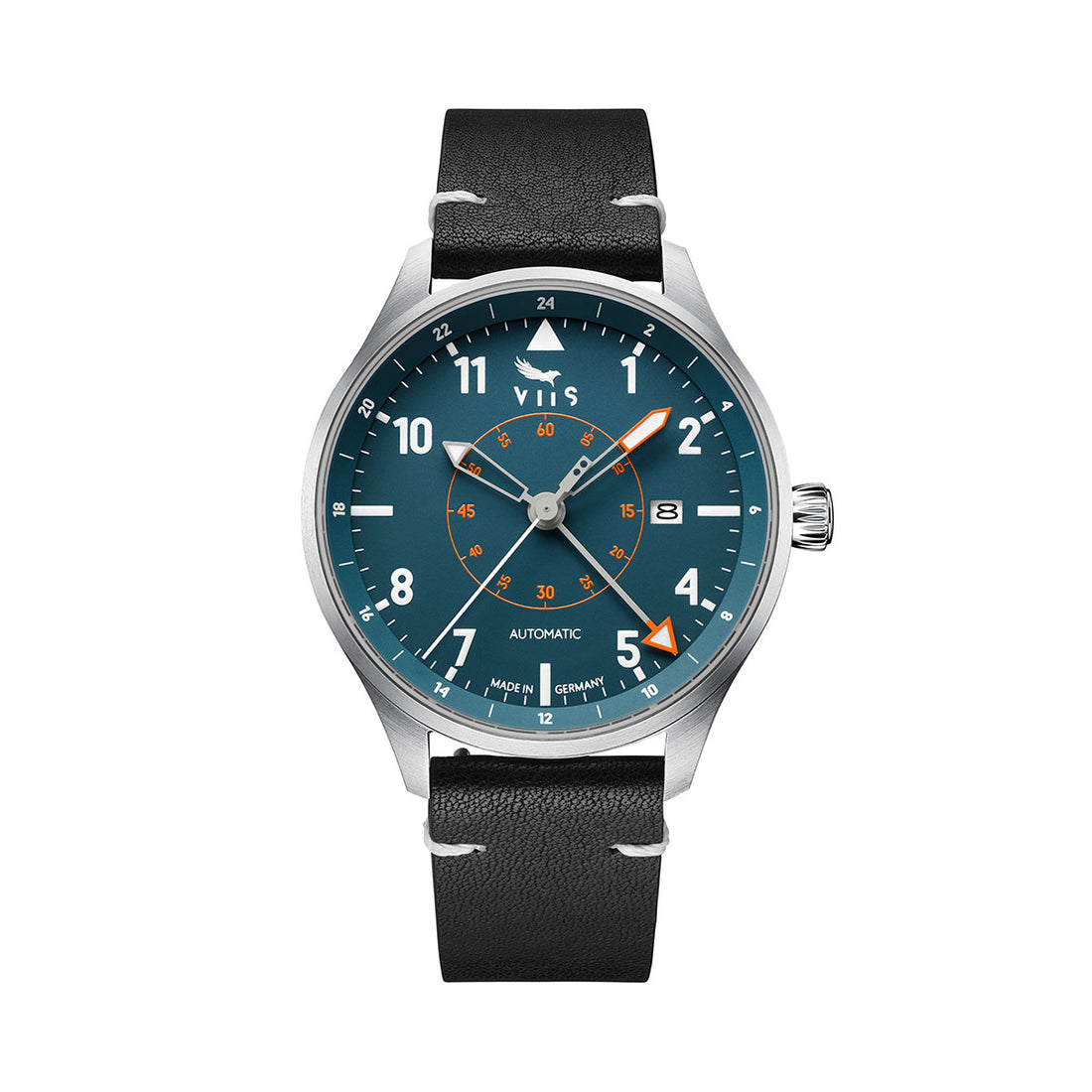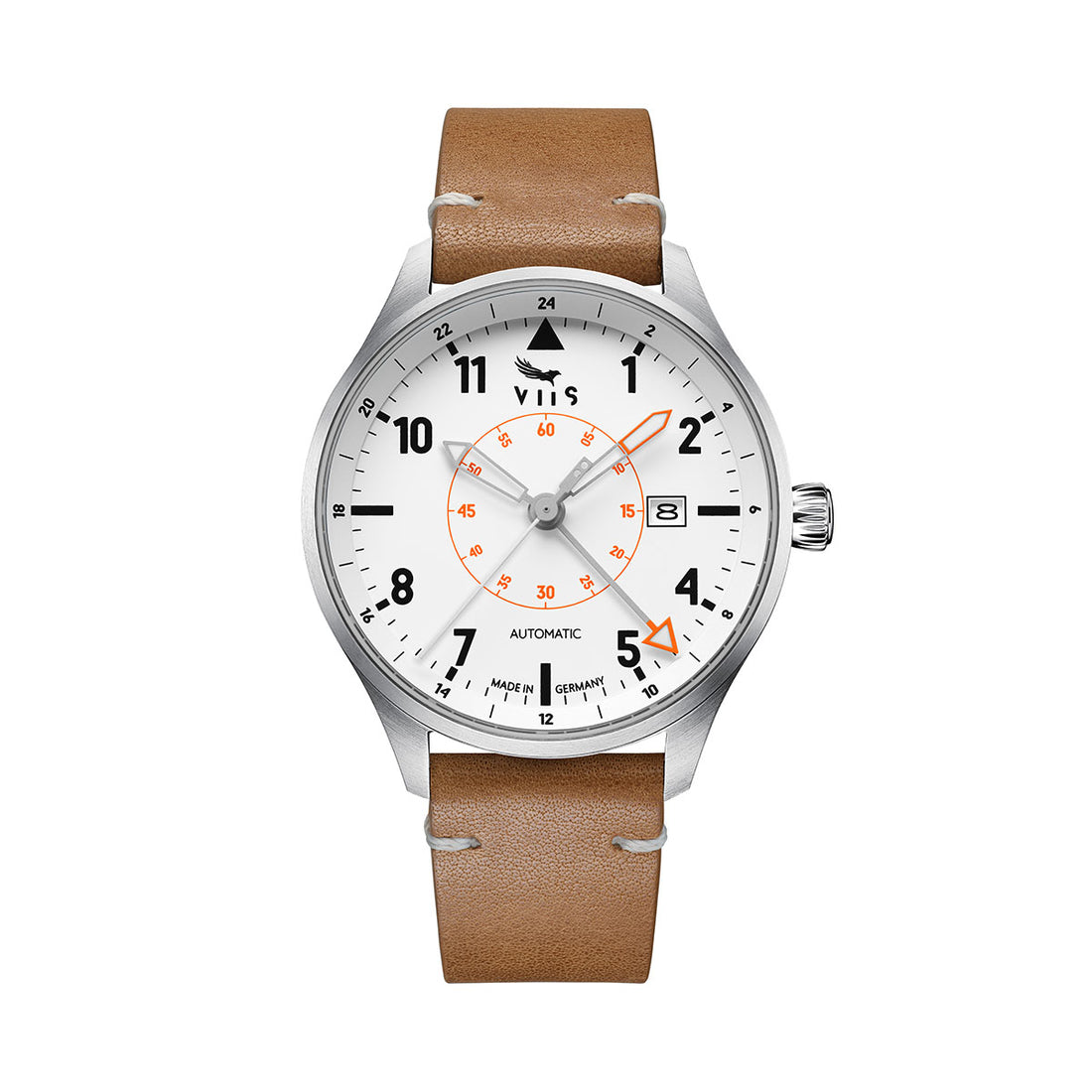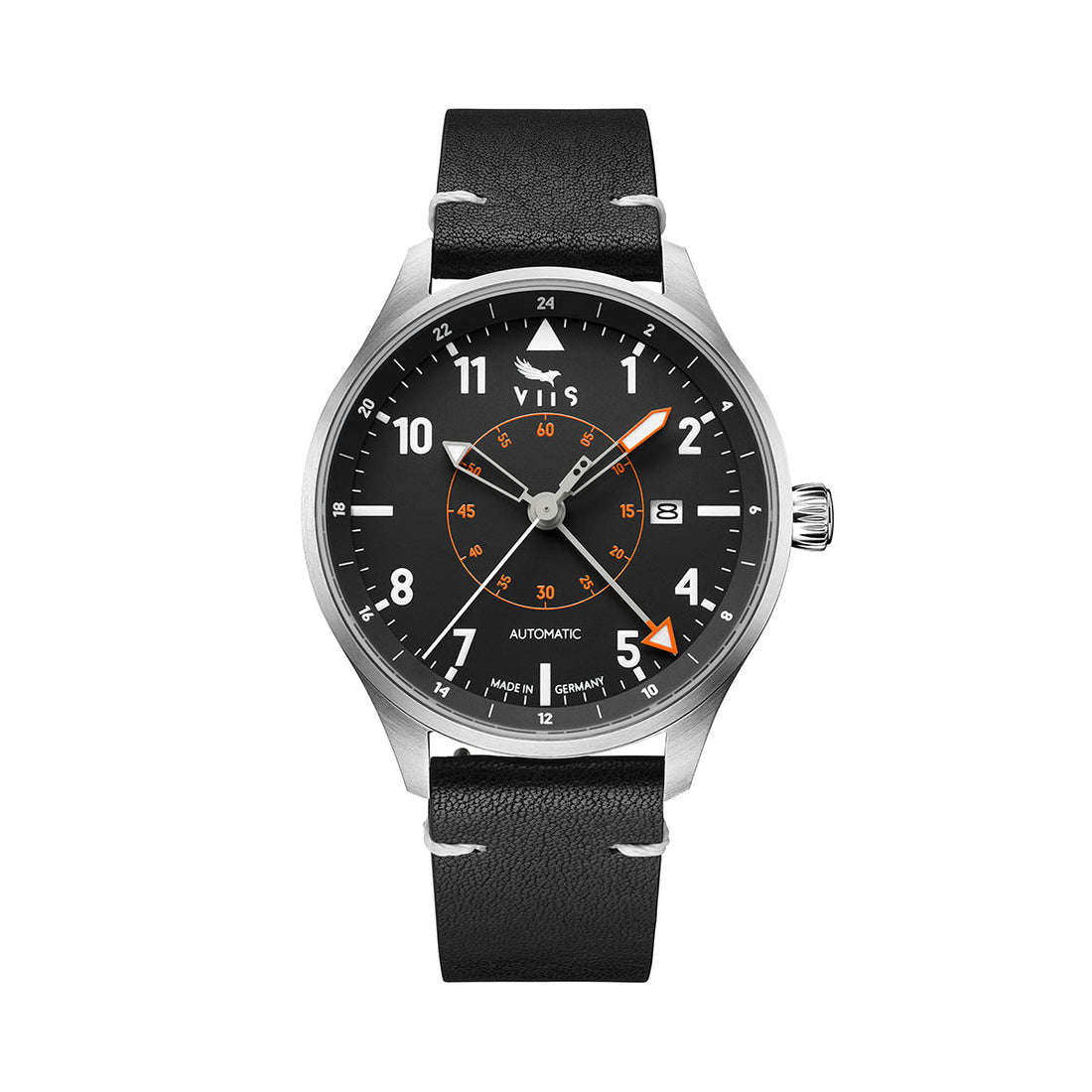The world of watches is diverse and gigantic. A prominent type of wristwatch is the pilot watch, also known as Flieger watch. Flieger watches are not just timepieces, but also witnesses to aviation history, technical masterpieces and modern accessories. Their roots go back to the early days of aviation and have undergone a fascinating evolution to this day.
In this blog article, we dive into the development and history of pilot watches, explain the role they played in World War II, and highlight the special features that make these timepieces so unique. We also take a look at what pilot watches are today: modern reinterpretations and timeless companions that combine tradition and innovation.
A Flieger on your wrist – a piece of aviation history in your heart
Originally developed for use in the air, the history of pilot watches begins around 1900 - in the early days of aviation. At that time, the Brazilian aviation pioneer Alberto Santos-Dumont was developing an aircraft with a motor. During his first flight attempts, he discovered that the pocket watches that were prevalent at the time were impractical for navigation and flight control. He wanted to have his hands free and to be able to quickly glance at the watch and complained about this to his friend and jeweler Louis Cartier. And so in 1904 it was Cartier himself who designed the first wristwatch specially developed for pilots - the "Santos". This watch was characterized by its easy-to-read dial, could be worn on the wrist and thus laid the foundation for the development of pilot's watches.
But the advent of pilot watches brought with it another development. Since wristwatches in the form of a piece of jewelry had previously been worn mainly by women, the development of the pilot watch led to the widespread acceptance of wristwatches among men.
On October 23, 1906, Santos-Dumont made the first officially recognized motorized flight, thereby making not only aviation history but also the history of the pilot's watch.
The heyday of the pilot watch in World War II
In the years that followed, many things developed further. During the First World War, the importance of precise timepieces for pilots increased. At that time, pocket watches with a leather case were worn around the arm, or installed on-board clocks took over the functions of pilot watches.
It was not until World War II that pilot watches reached their peak. Classic Flieger watches became an indispensable tool for the German Luftwaffe pilots. Flight distances became longer, demands became greater and watches became more functional. Military pilots depended on reliable and precise timepieces to successfully fly maneuvers and master complex navigation tasks. For this reason, many watch manufacturers switched their production to pilot's watches and adapted to the increased demand. This brought with it a lot of innovation in the watch sector. This is how the famous Baumuster B observation watches (Beobachtungsuhren) came about, which many today consider to be the classic Flieger watch.

Features of historical Flieger watches
Historical Flieger watches from World War II are characterized by their functionality and reliability and often have a classic, robust design. They were specially designed for use in the air to withstand extreme conditions. They also had to be easy to read and accurate.
We have summarized the most important features of pilot watches in World War II.
- Large, robust case: Pilot watches typically had unusually large cases, often with a diameter of 50 mm or more. This is obviously very large - but it allowed the time to be read intuitively during the flight.
- Clear, easy-to-read and high-contrast dial: The dials were simple and clearly designed, with large, easy-to-read Arabic numerals. A separate minute track was often present next to the hour ring. Since the focus here was also on optimal readability, a dark and matte dial was usually numbered with white markers to achieve a high contrast. The numerals and hands were coated with luminous material (e.g. radium or tritium) to ensure good readability even in poor lighting conditions or at night.
- Long and wide hands: The hour, minute and second hands on a pilot's watch were relatively large to ensure readability.
- Long leather strap: Pilot watches were often equipped with distinctive, long leather straps so that they could be worn over the heavy pilot's jackets.
- Robust, mechanical movement: Pilot watches were equipped with mechanical (hand-wound) movements that provided both high accuracy and a long power reserve. The movement had to be robust and shockproof so that the G-forces that acted in the aircraft did not have a negative influence on the time measurement.
- Large, easy-to-grip crown: A large and easy-to-grip (onion-shaped) crown was essential to be able to operate and wind the watch even when wearing pilot's gloves.
- High precision and reliability under extreme conditions, such as strong temperature fluctuations, humidity, vibrations and magnetic fields that can occur in aircraft.
The role of pilot watches today
The eventful history of pilot watches shows that the watches were an indispensable part of military equipment and were developed and built specifically for the needs of the cockpit. With the advancement of technology in aircraft fittings and on-board instruments, it is no longer necessary for a pilot to wear a pilot's watch with its characteristic features on his arm.
But pilot watches are more than just timepieces today. They are a symbol of tradition, precision and reliability and reflect the spirit of technical innovation. Even today, German Flieger watches have this incomparable flair and enjoy a legendary reputation. Not only pilots, but also watch lovers value them for their historical value. As a sign of classic style and quality, the watch - whether historical or modern - is a timeless accessory that conveys a feeling of freedom and independence.
Further development and reinterpretation
Despite or perhaps because of the fascinating history of pilot watches, constant, contemporary development is a major favourite of our time. In recent decades and even today, pilots have experienced technological progress and aesthetic diversity. This means that watches can be produced that are even more precise and functional than their historical models and that adapt to the needs of today.
At VIIS, we place great value on traditional watchmaking craftsmanship and appreciate the functional style of the heirloom pilot watches. Our aim is not only to set a new standard in terms of quality, but also to go a step further in terms of design. Our new interpretation of the model B observation watch harmoniously combines modern design with functionality and classic elements. Excellent readability, modern accents and the mechanical automatic movement form the heart of our VIIS Flieger GMT 42 . This makes it not only chic and precise, but also cuts an impeccable figure both in the air and on the ground.
Immerse yourself in the fascinating world of pilot watches and experience how we reinterpret iconic designs from times gone by - your next favorite watch is already waiting for you!





